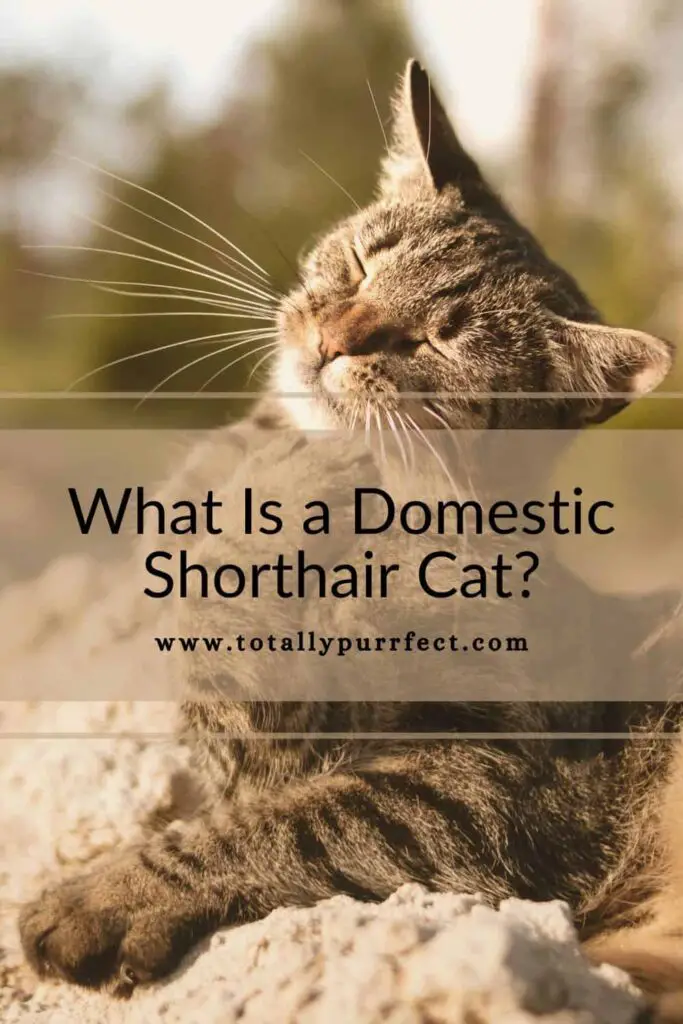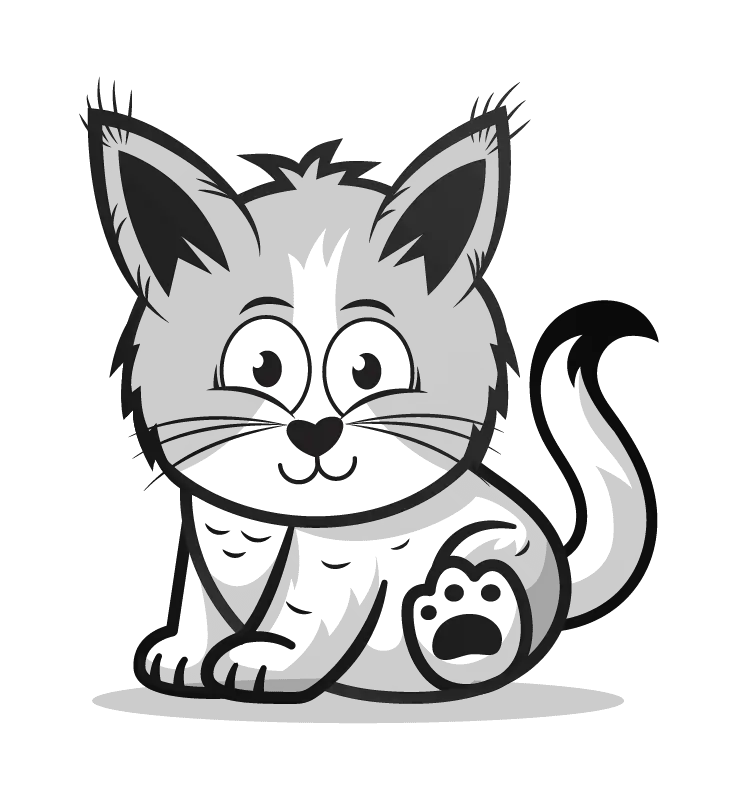What is a domestic shorthair cat? What key features do domestic shorthair cats have? Do they have certain characteristics or personality traits? And what are the different types of domestic shorthair cats, within all of this? Well my friends, if you’re looking to learn more about domestic shorthairs – you’re in the right place. As this is our complete (get concise guide!) to understanding the ever-popular domestic shorthair cat. So let’s start from the top, shall we?
What Is a Domestic Shorthair Cat?
The name ‘domestic shorthair’ encompasses any cat that has been domesticated and has short sleek fur.
Where Did Domestic Shorthair Cats Come From?
So, the Domestic Shorthair cat can have its early roots traced all the way back to 2000 B.C in Egypt.
We all know that cats became divine symbols in Ancient Egypt, so it may come as no surprise that the domestic shorthair cat can be seen in many Egyptian sculptures and paintings!
Sometimes the cats were even mummified and placed inside the tomb alongside their human which shows they had an important role in the afterlife as well.
See, they first started off as simple rodent killers then before becoming more like pets, before finally, also being seen as almost like gods. Their status grew and grew.
And it’s said that it was actually the domestic shorthair cat, specifically, that was the predominant type of cat around at the time. (Which is pretty cool, right?)
So what happened next?
You hear different stories about how the domestic shorthair cat, came about in our homes today.
But it’s said that many years later, pioneer settlers brought Domestic Shorthair cats to the United States of America.
They were, again, just considered as working cats and taken on voyage ships across to North America to keep mice/rats under control.
However, due to their dedicated rat catching abilities, they became a favourite amongst the settlers as they protected the harvested grains and food storage areas.
See it was a bit of a win-win situation. The settlers were happy to provide room and board, in exchange for the invaluable service the cats provided, as they wanted the cats to stay.
Cats are, however, undeniably loveable. So what started as a mutually beneficial arrangement grew into a genuine love between the animal and the humans who took them in.
They didn’t quite reach the god-like glory of back in the Egyptians but they were still loved, valued and respected. (Which is what they still should be today!)
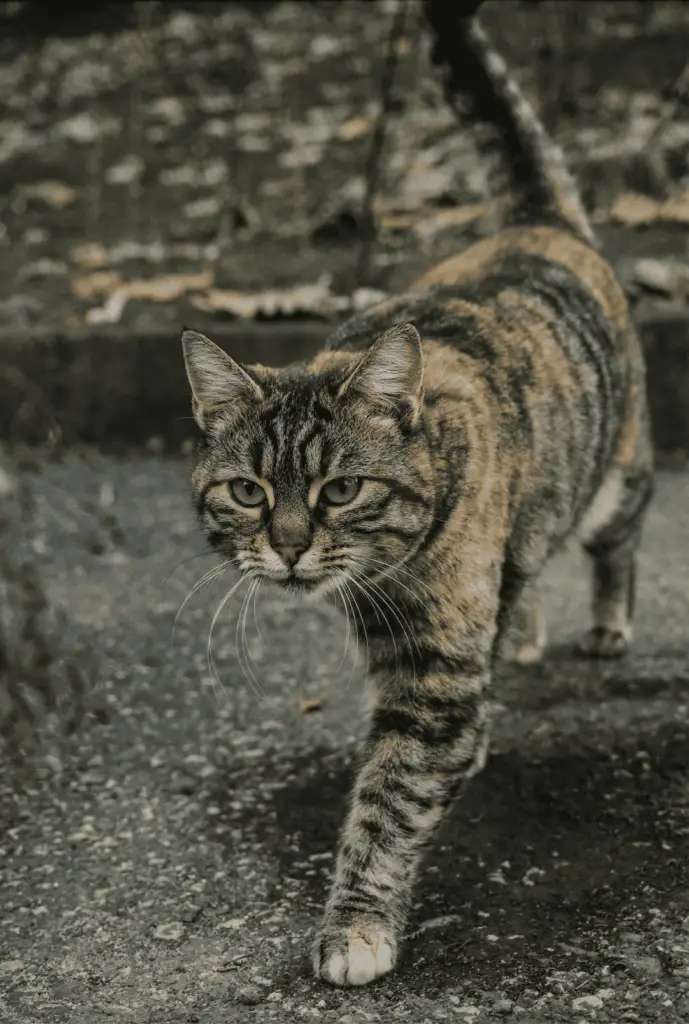
So, Is a Domestic Shorthair Cat a Breed?
So here’s the confusing part… We talk a lot about cat breeds, but domestic shorthair cats don’t actually belong to any widely recognised cat breed.
They are non-pedigree (i.e. they are not of any particular recognised cat breed and they have no breed standard.)
In fact, you can think of a domestic shorthair cat as the feline equivalent of a non-pedigree dog (mongrel.) They are what a lot of people affectionately call “moggies”, which is why you may not have actually known that they were officially classified as a “domestic shorthair cat!”
It also seems that there are no clear guidelines for what counts/doesn’t count as a domestic shorthair cat, other than how it looks and where it – seems – to have come from.
So let’s explore the “look” of them further, in order to answer, “what is a domestic shorthair cat?!”
What Does a Domestic Shorthair Cat Look Like?
In essence – domestic shorthair cats have rounded heads and paws, medium length, non-fluffy tails and a muscular body.
They are usually medium in size (weighing 2.5-7kg depending on sex, males being larger)… So they’re very different to the mighty Maine Coon cats. (Which is what our Cody is!)
Is a Domestic Shorthair Cat The Same as a ‘British shorthair’ or the ‘American shorthair’?
Just to make it even more complicated – no, they’re not!
The standard domestic shorthair cat is not the same as other shorthair cats, as other short haired breeds are purebred cats; specifically bred by breeders.
See, they may share similarities in how they look (particularly when it comes to having “short hair”), but if a cat has been specifically bred, then that puts them into the category of that specific breed.
Whereas a domestic shorthair cat, is essentially just a short haired cat with mixed ancestry.
They’ve not been specifically bred by anyone, they’ve simply descended so are more of a mix, and have more of a “wild” family history. Does that make sense?
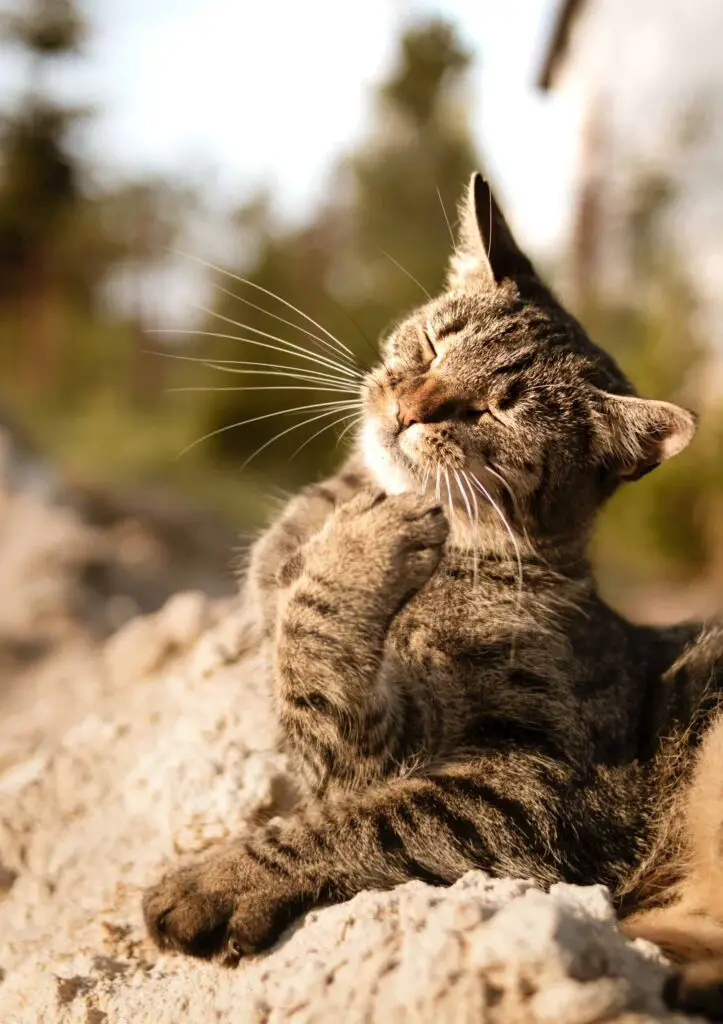
Types of Domestic Shorthair Cats
So what are the different types of domestic shorthair cats? Well, because domestic shorthair cats aren’t pedigree cats, they can inherit any color gene, depending on their ancestry.
We generally tend to categorise them as followed however, and by understanding the different types of domestic shorthair cats, you can then better recognise them. So, we’ve got…
1) Domestic Shorthair Tabby Cat
The domestic shorthair tabby cat is the most common. This is because a “tabby” is not a breed of cat, but a coat type seen in almost all genetic lines of domestic cats, regardless of its breed.
It’s therefore no wonder that most domestic shorthair cats will have some form of tabby within them.
See, you’ll get the classic tabby pattern with typically has just one dominating colour (mainly brown or grey) with stripes ranging from black to brown, or a ‘mackerel tabby’ (which has thinner and smaller stripes.)
There are also ‘spotted tabby’ domestic shorthair cats. This is where their spots are set in a line type of pattern. And even, ‘ticked tabby’ domestic shorthair cats (which just means the spots are smaller.)
Now most of the time, you won’t break the TYPE of tabby domestic shorthair cat down, this specifically.
In fact, usually, you’ll simply recognise a tabby domestic shorthair cat by being, shorted haired, striped and with that distinctive letter ‘M’ on their forehead.
(Although this may actually be hidden, which is why you may have yourself a tabby cat, without even realising it!)
Regardless, there’s a good chance you’ll have seen, owned or known someone who owns a tabby domestic shorthair cat. (Our childhood cat, Smudge – bless his soul – was a tabby domestic shorthair cat, and he was “totally purrfect” too!)
You can learn more about what a domestic shorthair tabby cat is (and how to differentiate them from the other shorthair breeds that look similar), in our free, complete guide!
2) Solid Coloured Domestic Shorthair Cat
A domestic shorthair cat can also come in a solid colour (potentially hiding the tabby patterns beneath it, might we add!) But when it comes to the colours that a domestic shorthair cat usually is, it tends to be just black, white or light brown.
Other colours or shades are rare in the domestic shorthair cat breed, because these colours tend to come from specific breeds, and as a result of breeding. You see? But they’re still, of course, undeniably beautiful!
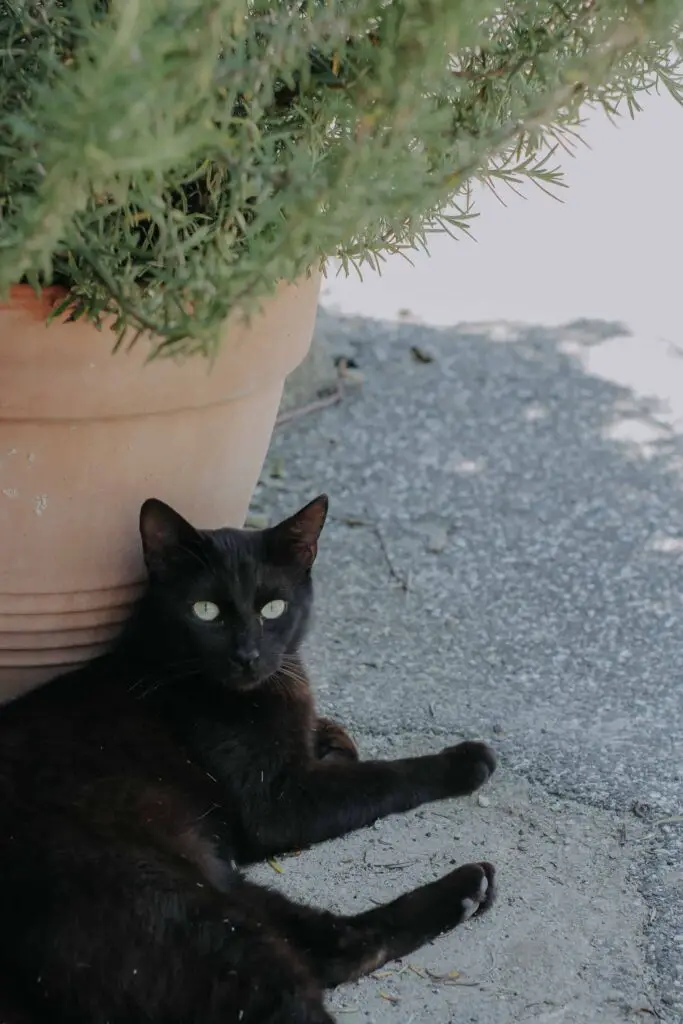
3) Bicolour Domestic Shorthair Cat
Next up, some types of domestic shorthair cats are bicoloured. These are cats that are usually 50/50, with two different colours (usually black and white), in any pattern.
The white parts are typically found on their face, legs and stomach and the black then takes up the rest. So they’re pretty easy to spot!
4) Other Types of Domestic Shorthair Cats
To summarise the last few types of domestic shorthair cats, you’ve got:
Tortoiseshell Domestic Shorthair Cat:
The most common tortoiseshell domestic shorthair cat is where there are randomly placed patches of black, cream and red all over the body. This is the classic ‘tortie’.
Calico Domestic Shorthair Cat:
This is very similar to tortoiseshell but with large amounts of white colouring on them too. Whereas, the tortoiseshell domestic shorthair cat won’t really have any white on them at all.
Torby Domestic Shorthair Cat:
You may also find a tortoiseshell cat that also has tabby markings. These cats have a base coat of tortoiseshell with tabby markings on top. They aren’t a solid-colored tabby, but they aren’t a tortie either due to the stripes.
So that then places them into the category of a torby domestic shorthair cat.
Harlequin Domestic Shorthair Cat:
And last but not least, you may also find a harlequin domestic shorthair cat… Which is a bit of a “mouth-full” you might think! But this is essentially just where they have several large patches of colour…
The patches themselves can be any colour and may even have markings in them.
For example, you might have a cat with bright orange patches that show tabby markings. In this case, if their forehead is white, it is possible that the distinctive tabby letter M can’t be seen.
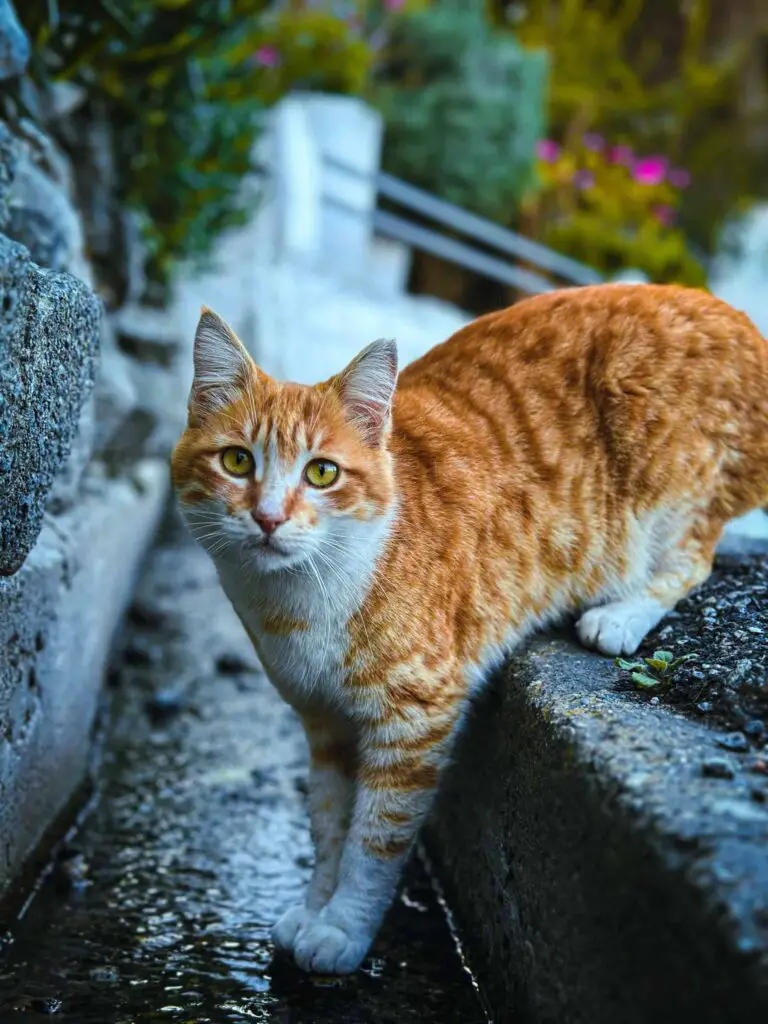
But… Does Classification Really Matter?
When it comes to the specific types of domestic shorthair cats, no, it doesn’t really matter. Because they’re not bred any particular way, they can often be a mix that’s hard to 100% identify anyway.
But in a way – that makes each domestic shorthair cat, extra special.
Domestic shorthair cats may also not compete in shows, without the linage of pedigrees. But to their owners, they are beloved pets who make up an important part of the home and family.
Knowing the exact type doesn’t really matter or even come into it. We love them, they love you and that’s, that!
Domestic Shorthair Cat Personality
Now if you’re wondering what domestic shorthairs are like and what exactly the domestic shorthair cat personality is, to get a better, overall feel for them – well, just as us humans, they will of course, have different personalities.
The key to an affectionate, confident cat is proper socialisation when they are very young.
But, on the whole, domestic shorthair cats are regarded as friendly, affectionate, intelligent and playful. (Probably because they have naturally adapted to be this way, and it’s been key to their survival.)
What Is Their Lifespan?
Another great thing about domestic shorthairs, is, because of their mixed parentage, they don’t tend to be at-risk for any unusual health complications.
For this reason, they have a lifespan on average of around 13 years, although they can – of course – live much longer than that. Our beloved, Smudge, lived to 18 years, 3 months and 20 days… exactly. ❤️
So it very much depends on the kind of care a cat receives and – sometimes – a stroke of luck!
How Much Do They Cost?
So you’ve got a good idea now, of what domestic shorthair cats are like, right? So, if you like what you hear, you may start to wonder – “how much do they cost?”
Well, domestic shorthair cats are one of the most popular breeds and due to overpopulation of this cat and the fact that it is not a pedigree, many shelters are now filled with domestic shorthair cats needing homes.
So in many cases – they are actually available for free (or at a very small fee.)
It is usually a case of completing a ‘match application form’ whereby the shelter assesses whether your home is suitable for adopting a specific cat/kitten. It will look at your home, family and circumstances to make sure you get the best match. The only cost is usually in the form of a donation to the shelter.
But by bringing home a cat from a shelter, you are also saving a life (so it’s well worth doing if you’re considering getting a domestic shorthair cat.) I promise you – you won’t ever regret it, either.
Kittens are also offered for sale by owners whose cat has had kittens and they cannot look after them or do not want them.
They can cost anything from £20-£200 and are often found in local ads. Just be very careful about buying kittens this way. Don’t get “pet fished”, and always buy from a reputable buyer who you know will treat their kittens right, and deserves to be in business.
That’s All For This One
So there we have it. “What is a domestic shorthair cat?” I hope this guide has now clearly answered that (and more.)
Thanks for your time in reading. Be sure to browse our site for more.
